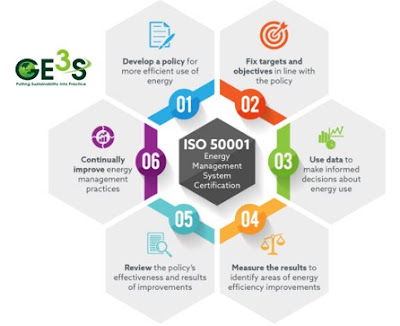Carbon footprint: the stepping stone towards a carbon neutral world
Climate
change is recognized as a major challenge today. The Green House Gas
Emission have negative impact on the climate and the environment. Carbon
dioxide is the main Green House Gas Emitted by human’s activity. Clearly,
the industrial sector has a huge role to play in this increase of GHG emissions
since industrialization. That is the reason that we see that industries are under
pressure from the government as well as the public to green their activity and
reduce emissions.
Because
of increasing pressure and concerns about the global warming, climate change
and carbon emissions issue private sector is now pursuing estimate of their GHG
emissions also called as carbon footprint. They are also investing
in projects that reduce GHG emissions.
Due
to the increasing awareness about global warming climate change and melting ice
caps, governments, industries as well as individuals are gradually trying to
reduce the GHG emissions and estimate the carbon footprint and try to become carbon neutral. Stakeholders now
understand the need to reduce GHG emissions so that the threat of global
warming and climate change can be thwarted. If carbon neutrality is practised
by the private sector then the Paris agreement targets can easily be achieved.
Companies
are now conscious of their actions, and many industries are working on to
minimize their environmental impact. ‘Carbon footprint’ has become a well-known
concept and is at the centre of public debate on climate change mitigation
action and also on adaptation.
Carbon
Footprint is the process of calculating certain amounts of gaseous emissions
associated with climate change, human production or consumption activities.
There are different types of carbon footprint, such as corporate carbon
footprint, carbon footprint of a product or an event, carbon footprint of
a service or a community/city etc.
Carbon
footprint from the organization and products are the most frequent types of
carbon footprint. The total carbon footprint from the organization is n the
direct and indirect emission from all the activities across its organization.
Once the carbon footprint is assessed, efforts to reduce the emissions are
required and the emissions that can not be reduced should be offset in order to
become carbon neutral. Carbon neutrality is the balance of GHG
emissions, the emissions that happen must also be reduced directly or
indirectly.
Direct
emissions are those that arise from the burning of fossil fuels in vehicles or
equipment owned by the organization as well as escaped greenhouse gases from
the organization’s facilities.
Indirect
emissions are those which are derived from the energy used by the organization’s
activities, such as electricity consumption. A product’s carbon footprint
calculates all the emissions associated with the production of that product.
This includes the sourcing and processing of the raw materials transporting it
to the manufacturing facility and then delivering to customers, its end use and
disposal etc. After calculating their carbon footprint, organizations and
individuals can understand what their impact on the environment is and how they
can find ways to reduce that impact.
GE3S
has been assessing carbon footprint of companies for decades now, we have also
helped companies become carbon neutral Carbon neutrality is the future for all.




Comments
Post a Comment